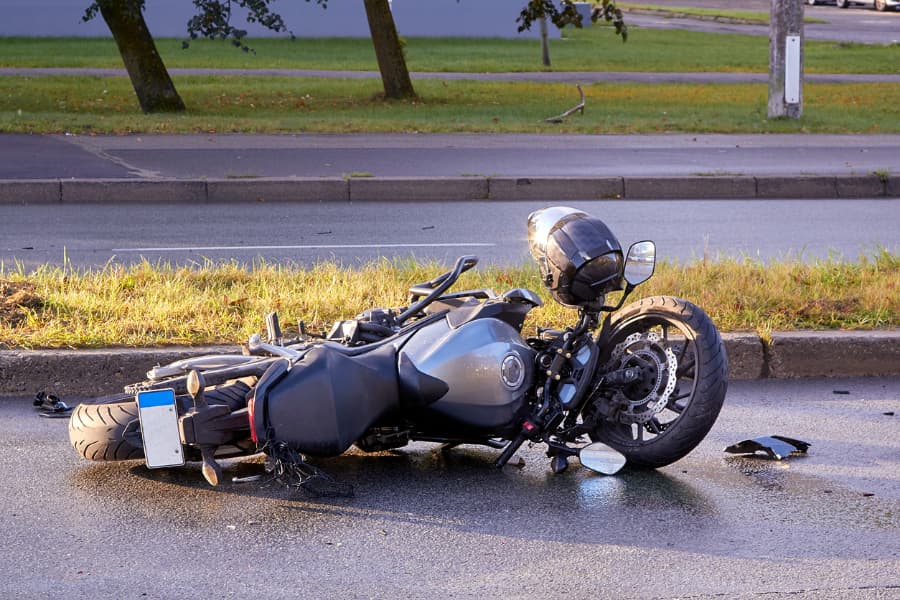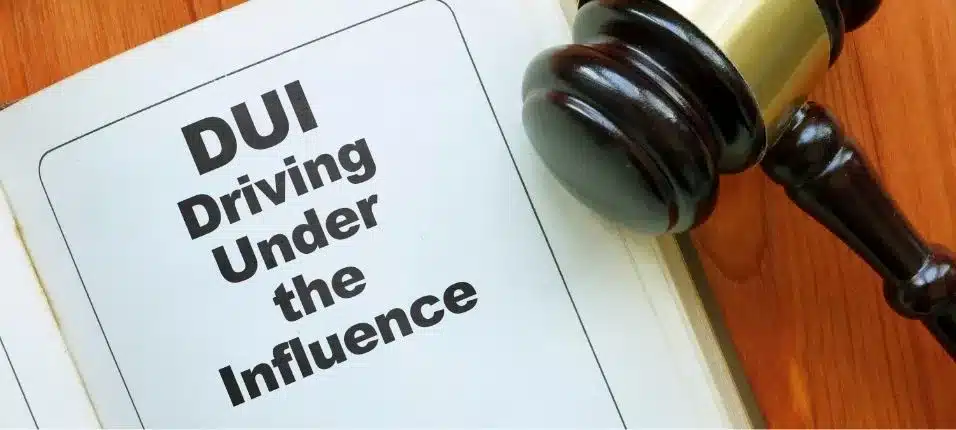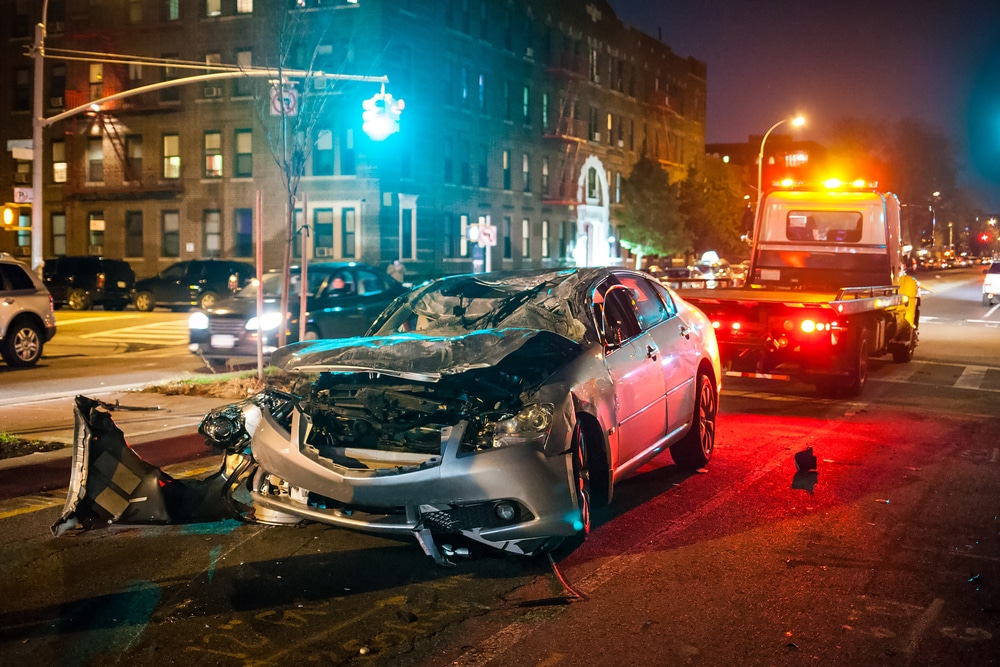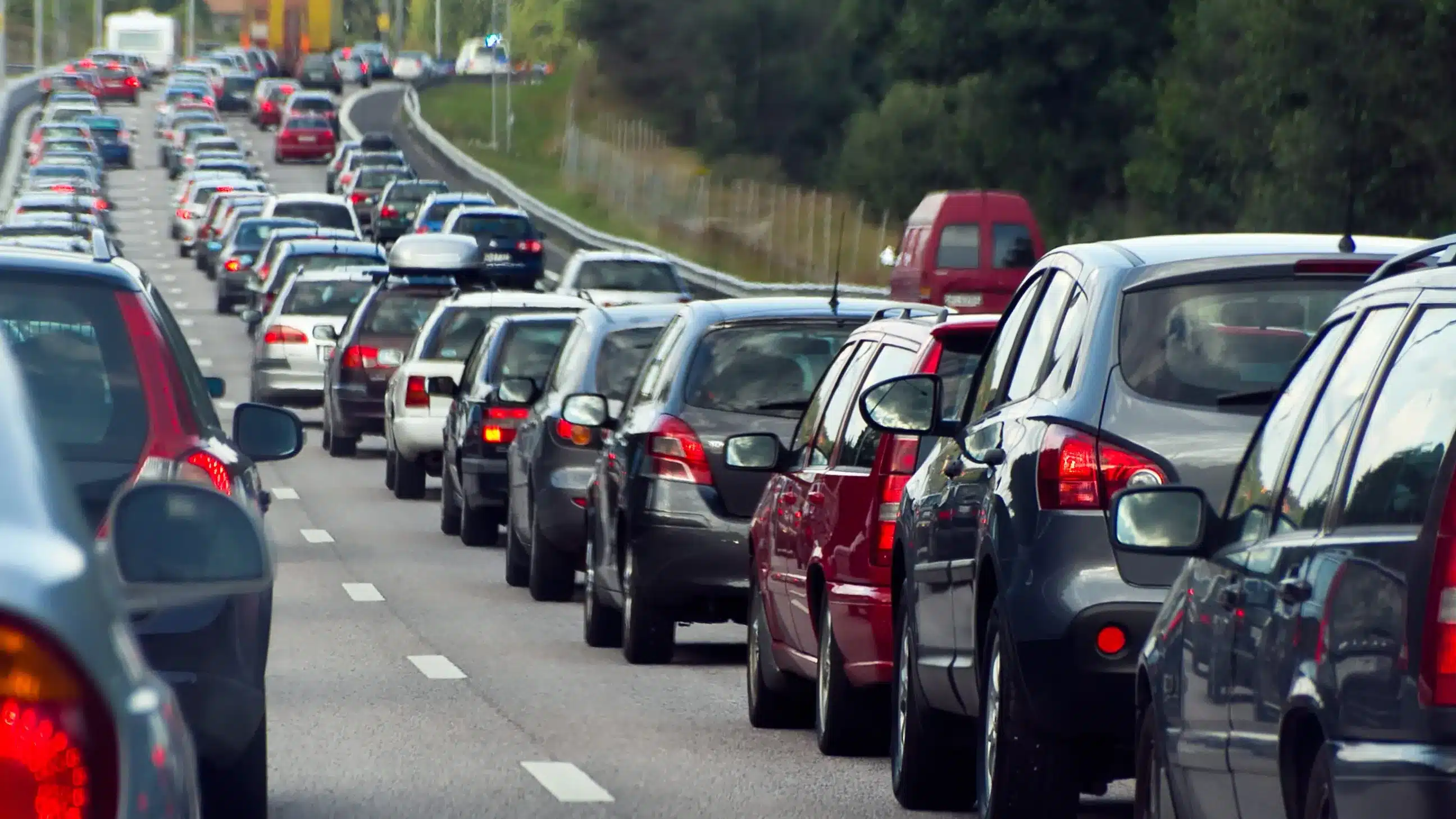- Can I Still File a Claim if I was Responsible for the Accident?
Motorcycle accidents have been on the rise recently, often with devastating outcomes. Studies have analyzed the causes and severity of these incidents, revealing alarming insights.
Key Statistics:
In 2022, Insurance Institute for Highway Safety (IIHS) estimates a total of 6,222 motorcyclist deaths, this value is nearly triple the number of deaths in 1997. To put this number into context:
- A high school stadium crowd: Many high school stadiums hold between 5,000 and 10,000 fans. Imagine 1,084 seats filled with people, representing the lives lost, in a Friday night game setting.
- Large High School Enrollment: The student population at a large high school is often around 1,500. Imagine four high schools completely emptied—every student gone.
- Small Town Population: Some small towns have populations close to 6,000. This many lives lost would mean the equivalent of an entire town wiped from the map.
- Hospital Staff: A large hospital might employ around 5,000 to 6,000 people, from doctors to support staff. This is like losing every single staff member in a bustling hospital, a loss that would shake any community.
According to National Highway Traffic Safety Administration(NHTSA), in 2021 most motorcyclist deaths occurred in urban setting (67%), non-intersections (65%), in clear/cloudy conditions (97%), and during daylight (57%).
Motorcyclists accounted for 15% of all traffic fatalities and 19% of all motor vehicle occupant fatalities.

In states without universal helmet laws, 55% of motorcyclists killed in 2021 were not wearing helmets, as compared to 9% in States with helmet laws.
Speeding and other driver negligence are leading factors to motorcyclist death.
Learn more about motorcycle statistics.
Understanding Motorcycle Accident Statistics Globally
While the U.S. experiences a significant number of motorcycle accidents, it’s important to recognize that motorcycle safety is a global issue. Many countries with high motorcycle usage have seen increasing rates of accidents and fatalities. Here’s a comparison of the situation in other countries:
- Europe: European countries, especially Italy and Spain, have seen rising motorcycle accidents despite stringent safety regulations. Helmet use is mandatory, but unsafe road conditions and a lack of public awareness have contributed to accidents. In many countries, motorcycles are commonly used as primary forms of transportation, further increasing the risk.
- Asia: Countries like Thailand, India, and Vietnam have some of the highest motorcycle accident rates in the world. Motorcycles are widely used for daily commuting, and roads are often poorly maintained. The lack of infrastructure, as well as the absence of comprehensive safety laws, contributes to the high number of fatalities.
- Australia: Australia has one of the lowest motorcycle fatality rates due to its strict helmet laws and mandatory safety courses. However, motorcycle crashes still account for a significant portion of road fatalities, particularly among young riders.
This can be seen by the amount of motorcycle accident research in the image below:
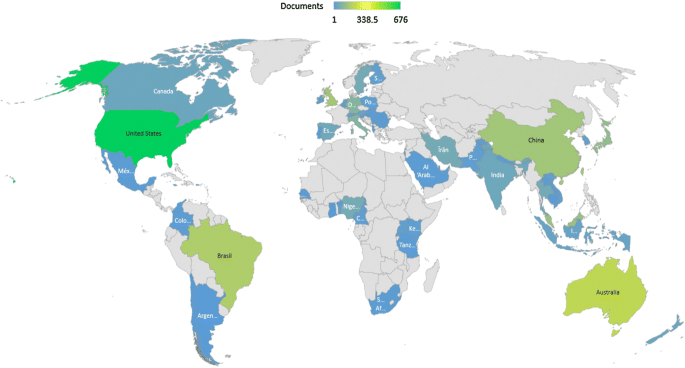
What Causes Motorcycle Accidents?
Motorcycle accidents happen for various reasons, often due to driver negligence, road conditions, or the actions of motorcyclists themselves. Common causes include:
- Distracted Driving
- Speeding
- Failing to Yield
- Poor Visibility
- Intoxicated Driving or Cycling
Learn more about driving tips to avoid accidents.
Types of Motorcycle Accidents
Motorcycle accidents vary based on environment, road conditions, and other driver actions. Common types include:
- Intersection Accidents: Motorcyclists are highly vulnerable at intersections, particularly when drivers make left turns across their path.
- Rear-End Collisions: Drivers may misjudge a motorcycle’s speed, rear-ending the bike, often with severe consequences due to the lack of protection.
- Lane-Change Accidents: Drivers who change lanes without checking their blind spots may strike a motorcycle riding alongside them.
- Open-Door Collisions: In urban areas, riders face the risk of a vehicle door suddenly opening into their path.
- Hit-and-Run Incidents: Some drivers may flee after hitting a motorcyclist, complicating claims and recovery efforts.
What Should You Do After a Motorcycle Accident?
- Check for Injuries & Call 911: Seek immediate medical help, and ask for the police to create an official report.
- Exchange Information: Obtain the driver’s contact and insurance details, and provide your own information as well.
- Document the Scene: Take photos of the accident, any visible injuries, and other relevant evidence, such as skid marks and road conditions.
- Seek Medical Attention: Some injuries, like whiplash or internal injuries, may not show symptoms immediately, so get checked by a medical professional.
- Consult a Motorcycle Accident Lawyer: Motorcycle accident claims can be complex, especially in determining fault and compensation, so consult a lawyer experienced with motorcycle accident cases.
The Role of Insurance in Motorcycle Accidents
Having the right insurance coverage is vital in the event of a motorcycle accident. Depending on your policy, your insurance can help cover medical bills, property damage, and lost wages after an accident. Here’s a breakdown of the types of coverage that are important for motorcyclists:
- Liability Insurance Liability insurance is required in most states and covers the costs associated with damages to other vehicles or injuries to other parties if you’re at fault in an accident. However, this doesn’t cover your own injuries or property damage.
- Collision Insurance Collision insurance covers damage to your motorcycle, regardless of who is at fault. If you’re involved in a crash, this type of coverage will pay for repairs or replace your bike if it’s totaled.
- Comprehensive Insurance Comprehensive coverage protects your motorcycle against non-collision events such as theft, vandalism, or damage from a natural disaster. While it’s not required by law, it’s a good option for riders who want full protection.
- Uninsured/Underinsured Motorist Coverage If you’re in an accident with a driver who doesn’t have insurance or enough coverage to pay for your damages, uninsured or underinsured motorist coverage can step in to fill the gap.
- Personal Injury Protection (PIP) PIP insurance helps cover medical expenses and lost wages for you and your passengers after an accident, regardless of who’s at fault. It can be especially helpful if you’re seriously injured and cannot work right away.
- Motorcycle Insurance for Passengers If you carry passengers on your motorcycle, ensure that they are covered by your insurance. Some insurance policies specifically include coverage for passengers, while others may require an additional rider.
Deadline for Filing a Motorcycle Accident Claim
Filing deadlines for motorcycle accident claims vary by state. For instance, in Georgia, there is typically a two-year statute of limitations for such cases. Missing this deadline can prevent you from obtaining compensation. Key exceptions include:
- Claims Against Government Entities: In many cases, these must be filed within six months.
- Wrongful Death Claims: The time limit starts from the date of death rather than the accident itself.
- Minors and Incapacitated Persons: The two-year period often starts when minors turn 18 or when incapacitated individuals regain capacity.
Timing is crucial. The longer you wait, the harder it can be to gather evidence, locate witnesses, and strengthen your case. At 770Goodlaw, we encourage victims to contact an attorney as soon as possible to improve their chances of success.
Am I At Fault For the Accident?
To assess fault accurately, it’s essential to examine details like witness statements, traffic camera footage, and police reports. Get help from a attorney to professionally confirm fault.
Can I Still File a Claim if I was Responsible for the Accident?
Yes, in many cases, you can still file a claim even if you were partially at fault for the motorcycle accident, depending on your state’s laws. In comparative negligence states, your compensation may be reduced based on your percentage of fault; for example, if you were 30% at fault, your award would be reduced by 30%. However, in states with modified comparative negligence, you may only recover damages if your fault is below a certain threshold (usually 50% or 51%). Contributory negligence states are more restrictive, as even slight fault (1%) may bar you from recovering damages.
Personal injury protection (PIP) or medical payments coverage can still help with medical costs regardless of fault. Consulting an attorney can clarify how your state’s rules impact your claim.
What Damages Can I Recover if I File a Accident Claim?
When filing a motorcycle accident claim, you may recover damages for medical expenses, lost wages, and property damage. Compensation can also cover pain and suffering, loss of consortium, and punitive damages for reckless behavior by the at-fault driver. The specific damages available depend on injury severity, fault, and state laws, so consulting a personal injury attorney is essential to maximize your compensation.
How Much is My Motorcycle Accident Claim Worth?
The amount a claim is worth depends on a variety of factors. Use this calculator to determine your future claim’s possible settlement.
Motorcycle Safety Tips for Riders
Riding a motorcycle requires a different mindset and skill set than driving a car. Due to the lack of protective features such as airbags or a metal frame, motorcyclists are more vulnerable to injuries in the event of an accident. Here are some tips for staying safe on the road:
- Wear Protective Gear While not all states have mandatory helmet laws, wearing a helmet is one of the best ways to reduce the risk of fatal injuries. In addition to helmets, protective clothing such as padded jackets, gloves, boots, and knee guards can minimize injury in the event of a crash.
- Obey Speed Limits and Traffic Laws Speeding reduces your ability to react to sudden changes in the road, and it makes crashes more severe. Following traffic laws—such as stopping at red lights and adhering to speed limits—can prevent many accidents.
- Maintain Your Motorcycle Regular maintenance checks are crucial for keeping your bike in good working condition. Inspect your tires, brakes, lights, and oil before every ride. A well-maintained bike is less likely to experience mechanical failure while you’re on the road.
- Be Visible Because motorcycles are smaller than cars, they can be harder for other drivers to see. Wearing bright-colored or reflective gear can help make you more visible, especially in low-light conditions or during bad weather.
- Use Defensive Driving Techniques Always assume that other drivers may not see you. Anticipate potential hazards and maintain a safe distance from other vehicles. Practice extra caution when riding through intersections or areas with limited visibility.
- Avoid Riding Under the Influence Alcohol and drugs can impair judgment and reaction times, making it more likely that you’ll be involved in an accident. Never ride a motorcycle under the influence of alcohol or drugs.
The Impact of Motorcycle Accidents on Families
Motorcycle accidents don’t just affect the individuals involved—they also have a profound impact on families and communities. The emotional, physical, and financial toll on families can be devastating. Here’s a deeper look at how families can be affected:
- Emotional Consequences The trauma of losing a loved one or having a family member suffer life-altering injuries can create significant emotional strain. Families may experience grief, anxiety, depression, and a sense of helplessness. It’s essential for family members to seek support from counselors, therapists, or support groups.
- Financial Burdens In addition to medical bills, families often face other financial burdens such as loss of income, home care, and long-term rehabilitation costs. If the motorcyclist was the primary breadwinner, the family may struggle to make ends meet. In these cases, filing a personal injury claim or wrongful death suit may provide financial relief.
- Long-Term Adjustments In the event of severe injuries, families may need to make long-term adjustments to their living situation. This could include making the home wheelchair accessible, arranging for professional care, or relocating to be closer to a rehabilitation facility.
- Legal Complications Navigating the legal process of recovering damages can be overwhelming for families already dealing with the emotional and financial impact of a motorcycle accident. Hiring a skilled motorcycle accident lawyer can alleviate some of these burdens and ensure the family receives the compensation they deserve.
Motorcycle Safety Awareness and Legislation
While individual riders must take steps to ensure their safety, there is also a growing need for improved legislation and road safety initiatives. Here’s a look at how safety laws and advocacy efforts are impacting motorcyclist safety:
- Helmet Laws and Legislation In states with universal helmet laws, motorcyclist fatalities tend to be lower. Studies have shown that wearing a helmet significantly reduces the risk of head injury in an accident. However, several states have repealed or never passed helmet laws, which has led to a higher number of preventable deaths.
- Universal Helmet Laws: These laws require all motorcyclists, regardless of age, to wear helmets. States like California, New York, and Illinois have universal helmet laws in place, which helps save lives.
- Partial Helmet Laws: These laws typically apply only to certain age groups, such as riders under 18 or those with a specific level of experience. While they may increase helmet use in younger or less-experienced riders, they don’t provide the same level of safety for the entire riding population.
- No Helmet Laws: States like Texas, South Carolina, and Pennsylvania do not require adult riders to wear helmets. This has sparked debate, with opponents arguing that individual choice should take precedence, while safety advocates emphasize the increased risk of head injury without helmets.
- Motorcycle Awareness Campaigns Various organizations, such as the Motorcycle Safety Foundation (MSF) and the NHTSA, have launched awareness campaigns aimed at both motorcyclists and other drivers. These campaigns focus on increasing awareness of motorcycle visibility, promoting safe riding practices, and encouraging all road users to share the road safely.
- Training and Education Programs Motorcycle safety training is another key component of reducing accidents. In many states, completing a safety course is required to obtain a motorcycle license. These courses teach essential skills, such as how to navigate corners, perform emergency maneuvers, and handle various road conditions.
- Improved Road Design and Infrastructure In addition to legislation, better road design and infrastructure improvements can make roads safer for motorcyclists. Implementing features such as wider lanes, better road signage, and smoother road surfaces can reduce the risk of accidents. Roadway maintenance is also critical, as potholes and uneven pavement are common causes of motorcycle crashes.
When Do I Need an Attorney?
Whenever an motorcycle accident occurs, motorcyclists suffer. Insurance companies are stringent in giving out compensation. As such, to maximize your profit (compensation) gained, and minimize your losses (medical payments and property repair) after an accident, always call a attorney after any accident.
770Goodlaw Accident Lawyers Can Help
Our team of experienced motorcycle accident lawyers is ready to help you assess your case and fight for the compensation you deserve. Don’t let the negligence of others dictate your future—let us be your advocate in this challenging time.


